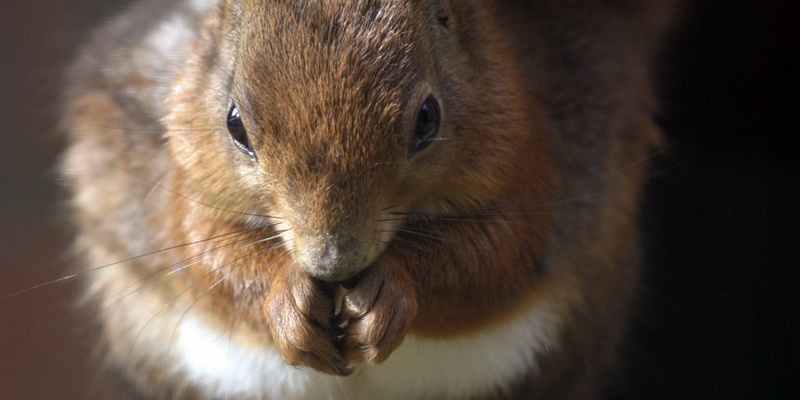Fife and Tayside’s dwindling red squirrel population is in danger of being wiped out by a virus, experts have warned.
The squirrel poxvirus, carried by American grey squirrels, has reached the central belt for the first time and may already be in Tayside and Fife.
Squirrel expert Sophie Eastwood said that while testing for the poxvirus had yet to be carried out locally, the future for the area’s red squirrels had become critical.
She is warning that the need to control grey squirrel numbers is more important than ever to secure the survival of the native red.
The virus has been discovered as far north as Abbey St Bathans on the east coast, and has also been detected just south of Glasgow.
Although it is not known exactly how many red squirrels remain locally, Scotland is the last stronghold for the species with 121,000 left 75% of the UK population.
The grey squirrel population has grown to between 200,000 and 300,000.
The poxvirus crossed into Scotland from England in 2005 and it is spreading north with fears the fate of Scotland’s red squirrels might now be similar to those south of the border, where they are largely extinct.
Work is ongoing locally to protect the species against the grey squirrel which competes for food and spreads the virus.
Among those leading the campaign is the Fife Coast and Countryside Trust and the Fife Red Squirrel Group.
Grey squirrels were introduced into Pittencrieff Park in Dunfermline in 1919, and they quickly spread throughout Fife.
Sophie, the trust’s red squirrel project officer, is leading the second phase of the Fife Red Squirrel Project, coordinated by the trust and supported by the Fife Environment Trust and the Heritage Lottery Fund.
It is also part-financed by the Scottish Government and the European Community LEADER in Fife Programme.
Sophie said: ”The recent confirmation that squirrel poxvirus has reached the central belt is the absolute worst-case scenario for the future of the red squirrel in Scotland. Until a vaccine exists the only way to protect red squirrels from the virus is by removing grey squirrels.”
Continued…
She added: ”The virus hasn’t reached Fife that we know of, but we haven’t yet tested further that south of Glasgow. It is likely it will have spread further north and Fife is perhaps next in the firing line.”
She added: ”Northern Ireland recently had a pox outbreak and around 90% of the red squirrel population was wiped out. If the same happens in Scotland there will probably be some population left, but they will be even more vulnerable than they are now.”
Sophie called on the public to join in the efforts to save the red squirrel, saying: ”The red squirrel is our native species and local extinction is now a real possibility. This is a species on our doorstep that we have the chance to protect.
”It is not the fault of the introduced grey squirrel, which happens to be a very successful species in this country, but it is up to us to redress the balance and give red squirrels a chance to survive.”
The grey squirrel is also regarded as a forestry and urban pest. They are trapped throughout the country for economic and conservation reasons.
As set out by the Wildlife and Countryside Act 1981 it is illegal to release, or allow the escape of, a grey squirrel into the wild.
People are encouraged get involved in the fight against the poxvirus by reporting findings of dead red squirrels, volunteering or donating to the project.
Sophie can be contacted on 08451 55 55 55 ext 445358 or sophie.eastwood@fifecountryside.co.uk. Record sightings of reds and greys at swt.org.uk/wildlife/squirrelsightings.
